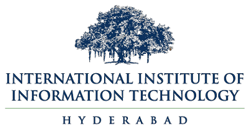Kamishetty Sreeja received her MS-Dual Degree in Computer Science and Engineering. Her research work was supervised by Dr. Praveen Paruchuri. Here’s a summary of Kamishetty Sreeja’s M.S thesis, Pareto optimal transportation solutions for better management of urban traffic pollution and emergency evacuation as explained by her:
Management of traffic is a very challenging task and it gets even more challenging when we take into consideration real-world problems like urban pollution and emergency evacuation. The standard traffic management approaches aim to solve travel demand forecasting which is essential for long-term planning and evaluation of transport policies of a region, but all these approaches propose only one solution.
Whereas, in this thesis we propose multiple optimal solutions maintaining the key characteristics across all the solutions known as Pareto optimal solutions to be used in different situations as suitable. Having alternate solutions to route vehicles during events such as emergency evacuation and pollution control can be quite useful and we demonstrate with our results that they solve the problem in a much better way. Rising levels of pollution is a major concern across many parts of the world and has been widely recognized for its adverse impact on human health. To address this, we develop a transportation policy in this thesis to handle air pollution caused by the heavy flow of traffic in urban areas. In particular, we aim to distribute the traffic flow more evenly through a city, by developing a flow algorithm that computes multiple solutions, each of which accommodates the maximum flow. To tackle this, we develop a Pareto-optimal Max Flow Algorithm (PMFA) to suggest multiple max flow solutions and introduces the notion of k-optimality into PMFA to ensure that the suggested Pareto solutions are sufficiently distinct from each other – referred to as Pareto-k-optimal Max Flow Algorithm (k-PMFA).
Events during an emergency unfold in an unpredictable fashion which makes management of traffic during emergencies pretty challenging. Furthermore, some vehicles would need to be evacuated faster than others e.g. emergency vehicles or large vehicles carrying a lot more people. The Prioritized Routing Assistant for Flow of Traffic (PRAFT) enables prioritized routing during emergencies. However, the PRAFT solution does not compute multiple plans that can help to handle better the dynamic nature of emergencies. PRAFT maps the prioritized routing problem to the Minimum-Cost Maximum-Flow (MCMF) problem, hence its solution can accommodate maximum flow while routing vehicles based on priority (maps higher priority vehicles to better quality routes (i.e., ones with minimum cost)). We build upon the PRAFT solution to develop a Pareto Minimum-Cost Maximum-Flow (Pareto-MCMF) algorithm which can compute all the possible MCMF solutions.
To summarize, we study the following two traffic management problems in this thesis,
- To better manage traffic for urban pollution control:
(a) We develop a Pareto-optimal Max Flow Algorithm (PMFA) to suggest multiple max flow solutions.
(b) Introduced the notion of k-optimality into PMFA to ensure that the suggested pareto solutions are sufficiently distinct from each other – referred to as Pareto-k-optimal Max Flow
Algorithm (k-PMFA).
- To better manage traffic during emergency evacuation:
(a) We develop a Pareto Minimum-Cost Maximum-Flow (Pareto-MCMF) algorithm which can compute all the possible MCMF solutions.
Through a series of experiments performed using the well-known traffic simulator SUMO (a) By performing emission modelling on the New York map, we show that our policy distributes the air pollution more uniformly across locations (b) We show that all the solutions generated by Pareto-MCMF indeed have properties similar to a MCMF solution thus providing multiple high-quality options for traffic police to pick from depending on the situation.

